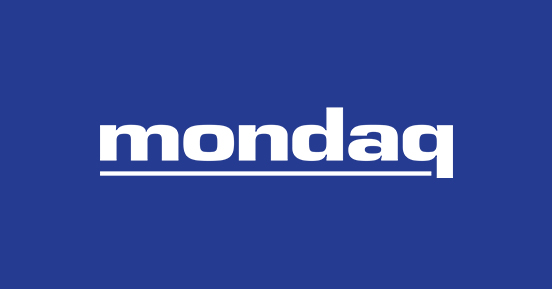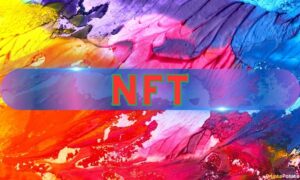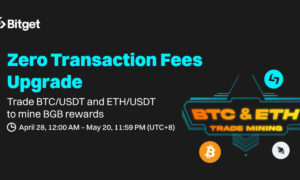Ownership Claims Over Auction Of “The First NFT” Previously Dismissed By A New York Court Now On Appeal – Fin Tech
8 min read
Way back (if we’re counting tech years) in 2014, artist
Kevin McCoy (“McCoy”) created a digital
record of his pulsating, octagon-shaped digital artwork Quantum on the Namecoin blockchain on May 2,
2014, thereby minting “the first NFT.” A lot has happened
in the digital asset and NFT space since that day. Who could
imagine that the mere creation of an original work of digital art
whose provenance was immutably recorded on a blockchain (a novel
act back then) would become a celebrated digital work that would
garner almost $1.5 million at auction seven years later? It’s
likely that the artist McCoy also couldn’t foresee that such a
sale would spur litigation in federal court over ownership rights
surrounding the NFT he created.
Namecoin, an early blockchain and the first fork of the Bitcoin
blockchain, is a system of “names” – unique
combinations of numbers and letters – that can be claimed and
traded by users. The Namecoin software is used to register names
and attach associated values (data) to such names on the
blockchain. It was created to provide a decentralized domain name
system (DNS), which translates domain names people type into a
browser into the numbers computers use to retrieve content on the
internet. Namecoin allows users to register and manage domain names
ending with the “.bit” TLD, which is not managed by a
central authority (e.g., ICANN) like traditional domain extensions
such as “.com.” Each domain name registered in Namecoin
is associated with a unique token that represents certain rights
and control over that particular domain. Ownership of the token
grants the user control over the domain name and the ability to
manage its settings, such as linking it to a specific IP address or
other data. Specifically, as stated in Plaintiff’s amended complaint, “In the case of
Namecoin…each Namecoin record [can] store data within its
blockchain records. This allows Namecoin records to be used like
domain names, or to contain other values such as references to
external images that allow them to act as NFTs.”
Most relevant to this litigation, ownership of every registered
Namecoin name periodically expires, at which point any user may
claim it and re-register the expired name if the original owner
does not renew. McCoy’s Namecoin name expired in January 2015
and remained unclaimed for the next six years. On May 28, 2021,
McCoy minted a new NFT to record and preserve Quantum, but this
time on the Ethereum blockchain (“Ethereum-Quantum”).
McCoy stated that he “moved the original on-chain data from a
burned Namecoin token into a modern, industry standard, ERC 721
token, while preserving all of the original on-chain
information.”
In May 2021, the auction house Sotheby’s, Inc.
(“Sotheby’s”) began marketing Quantum for an auction
entitled Natively Digital: A Curated NFT Sale (with the
listing describing Quantum (2014-21) as “Originally minted on
May 3, 2014 on Namecoin blockchain, and preserved on a token minted
on May 28, 2021 by the artist”). In the meantime, in April
2021, Plaintiff Free Holdings, Inc. (“Free Holdings” or
“Plaintiff”) had re-registered McCoy’s original
expired Namecoin token and thereafter asserted “title” to
the Quantum NFT as it existed on Namecoin
(“Namecoin-Quantum”), and then attempted to contact McCoy
via Twitter to discuss its purported rights. Plaintiff’s
messages were allegedly ignored, and on August 23, 2021,
Sotheby’s sold McCoy’s “re-minted” historic
Quantum NFT for a reported sum of $1,472,000. Litigation
ensued.
In February 2022, Free Holdings sued McCoy and Sotheby’s
(collectively “Defendants”) in New York district court,
taking issue with the Defendants’ statements that the Namecoin
record associated with Quantum had been “burned” or
“removed,” and asserting unjust enrichment and related
claims. Free Holdings also sought an order declaring that (i) Free
Holdings is the rightful owner of the Namecoin-based Quantum; (ii)
the Namecoin-Quantum has not been burned or otherwise removed from
the Namecoin blockchain; and (iii) the statements issued by McCoy
and Sotheby’s in connection with their sale of the
Ethereum-Quantum were false and misleading; and (iv) other damages
and injunctive relief. In short, Free Holdings claimed that the
Defendants presented an inaccurate narrative during the sale of the
Ethereum-Quantum NFT and that Plaintiff lost an opportunity to
profit.
According to the Plaintiff, “all subsequent activity
associated with [McCoy’s originally minted Namecoin] is forever
linked to that name on the Namecoin blockchain” and “all
prior history associated with that name . . . cannot be deleted so
long as the Namecoin blockchain continues to operate.”
Plaintiff essentially claims it has the claim ticket to Quantum and
thus obtained enforceable property rights in the Namecoin-Quantum
NFT and any related future sales, including the sale of the
Ethereum-Quantum NFT at Sotheby’s. Defendants countered that
the statements and characterizations about the Namecoin-Quantum
were not accurate, and that Free Holdings lacked any proprietary
interest in the original Quantum NFT or the Ethereum-Quantum NFT or
otherwise assert a concrete injury. Weighing the two sides:
Plaintiff believed it has ownership rights in the Namecoin-Quantum
through its registration of the expired Namecoin name, while
Defendants alternatively argued that there are really two Namecoin
NFTs – a “2014 NFT” originally registered by McCoy
and a “2021 NFT” registered by Free Holdings – and
that Plaintiff’s title to the re-registered “2021
NFT” was irrelevant to McCoy’s historic Namecoin NFT and
its reminting on Ethereum.
Earlier this spring, the district court dismissed the complaint, both for lack of
standing and for failure to state a claim. (Free Holdings, Inc. v. McCoy, No.
22-881 (S.D.N.Y. Mar. 17, 2023)). In ruling against Plaintiff, the
court rejected Plaintiff’s theory that its re-registering of
McCoy’s expired Namecoin name somehow conferred a property
interest in Quantum itself. The court pointed out that Free
Holdings “nowhere alleges an interest in the NFT minted on
Ethereum that McCoy and Sotheby’s sold” and that the
Plaintiff even considered them two different NFTs. In the
court’s view, Free Holdings adequately alleged a proprietary
interest in the Namecoin-Quantum NFT for standing purposes, but it
failed to advance any facts to support its claim to ownership of
Quantum merely based on its re-registration of the Namecoin-Quantum
NFT.
“[B]ecause no facts are alleged to suggest that
Free Holdings had any claim to a share in the sale in the first
place, there is no basis to support an inference that an injury
occurred.”
The court further found that Free Holdings failed to allege any
actual or imminent harm to the value of the Namecoin-Quantum, thus
dooming any claims related to defendants’ statements or actions
that purportedly devalued the Namecoin NFT.
Overall, as to the other unfair competition-related claims, the
court stated:
“Free Holdings has demonstrated nothing more than
an attempt to exploit open questions of ownership in the
still-developing NFT field to lay claim to the profits of a
legitimate artist and creator.”
Further, the court rejected any allegations that Defendants made
any false statements surrounding Quantum during the sale of the NFT
– the Defendants’ description of the Ethereum-Quantum
explained that the work was “[o]riginally minted on May 3,
2014 on Namecoin blockchain, and preserved on a token minted on May
28, 2021 by the artist,” and that the artist “moved the
original on-chain data from a burned Namecoin token into a modern,
industry standard, ERC 721 token” was not substantially false,
according to the court, and simply one interpretation of what
happened when McCoy’s original Namecoin registration expired
and was moved to Ethereum.
This dispute highlights a few interesting issues inherent with
NFTs. First, in a prior post from December 2022 following the
Ethereum Merge, we asked: Would the value of the NFT be
affected if two identical copies exist on two different
blockchains? And in a follow-up post on Ordinals on the Bitcoin
blockchain, we asked: How does a copy of an NFT on completely
different chain (Bitcoin, not Ethereum), affect value and licenses?
Does the original Ethereum NFT holder hold one set of rights and
the holder of the copycat on Ordinals possess any rights that may
be in conflict with the original NFT holder’s rights? Our prior
post noted that there will be variability in how current NFT
marketplaces handle these types of issues.
To be sure, the quirks of Namecoin – that is, the fact
that names periodically expire unless renewed and the existence of
a lack of consensus about what it means, from an ownership
perspective, for someone to re-register an expired name – may
not be present in other NFT-related disputes where the minter of an
NFT would presumably hold rights to the token unless it was
otherwise sold, transferred or licensed to a third party. Still, it
seems from the Namecoin dispute we’ve seen firsthand how two
NFTs could exist at the same time with only one of them possessing
value in the marketplace. It appears in the instant case that the
buyer at auction recognized that even though First Holdings held a
claim ticket of sorts to some iteration of the Namecoin-Quantum
NFT, it wasn’t holding the one that mattered. This is why
Sotheby’s was able to broker the $1.472 million sale of the
Ethereum-Quantum NFT evoking the original, celebrated 2014 NFT,
propelled by the cachet of acquiring what could be a relic from the
dawn of NFTs (following the sale, the buyer tweeted: “So happy to own the first ever
NFT, Quantum, from @mccoyspace. A piece of history. Let’s see
how we can continue its story.”).
Following the district court decision, the Plaintiff filed an
appeal of the order dismissing the case to the Second Circuit. This
summer, the parties advanced their arguments: the
Plaintiff-Appellant filed its brief in July 2023, the Appellee-Defendants
filed opposition on August 29, 2023, and the
Plaintiff-Appellant filed its reply brief on September 12,
2023.
Among other things, Plaintiff argues that the lower court erred
when it resolved an alleged factual dispute that Free Holdings’
re-registration of the expired Namecoin name did not confer a
cognizable property interest in Quantum itself, thereby tainting
the court’s analysis of standing. (“If Free Holdings does
have a ‘property interest in Quantum itself,’ as it has
properly pleaded and thus the Court must assume at the pleading
stage, Free Holdings cannot be the illegitimate intermeddler
portrayed by the District Court, and can proceed to the merits on
its claim….”).
In opposition, Defendants states that the district court
correctly found that the Plaintiff-Appellant lacked standing
(“The District Court correctly found that Appellant sought
nothing more than to take advantage of the nascency of the NFT
market to manufacture baseless and legally flawed claims”
[…] and that “the Court endorsed McCoy’s point that
Appellant ‘never alleges that it can or could control’ the
2014 Namecoin NFT”).
Just like the Quantum NFT artwork that is constantly in motion,
this case continues to revolve.
The content of this article is intended to provide a general
guide to the subject matter. Specialist advice should be sought
about your specific circumstances.
Source link
#Ownership #Claims #Auction #NFT #Previously #Dismissed #York #Court #Appeal #Fin #Tech





